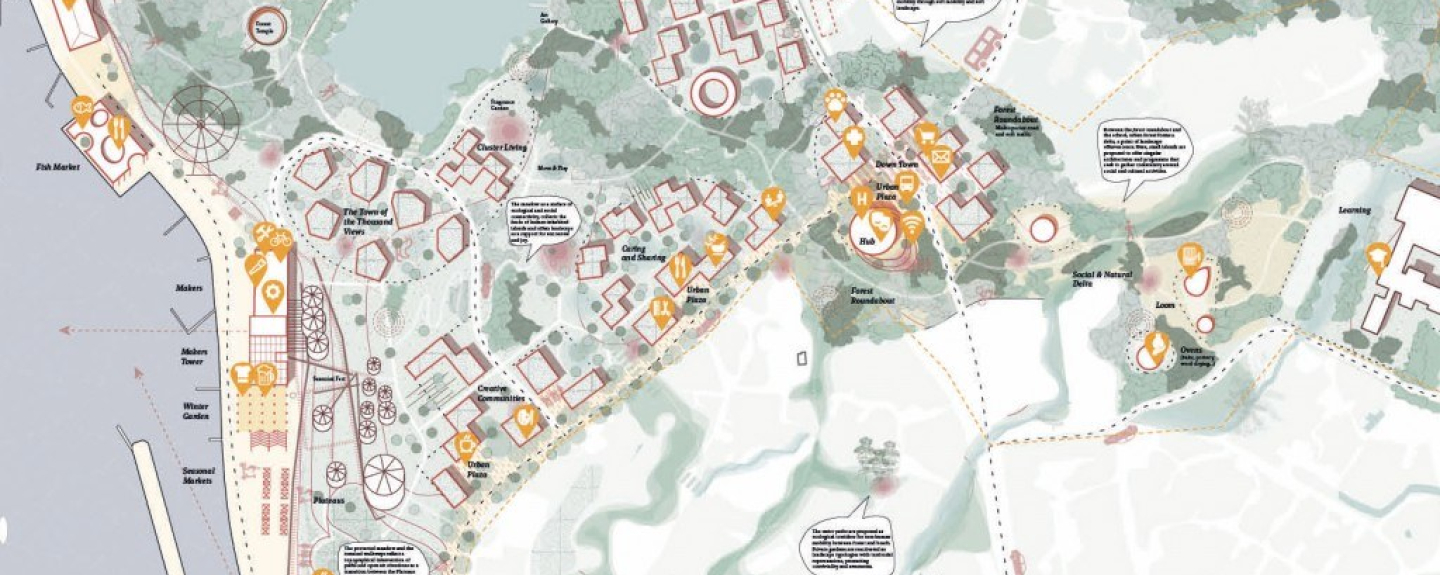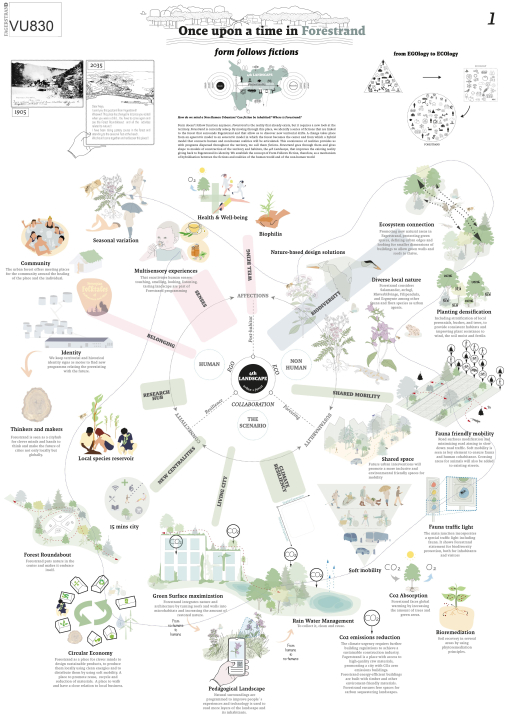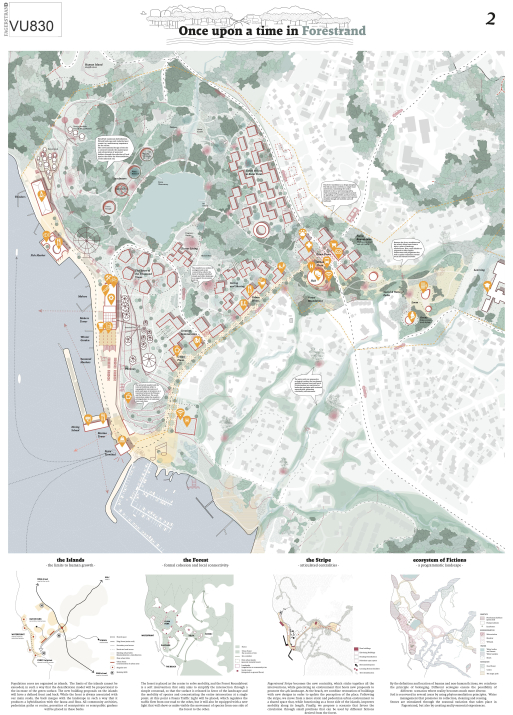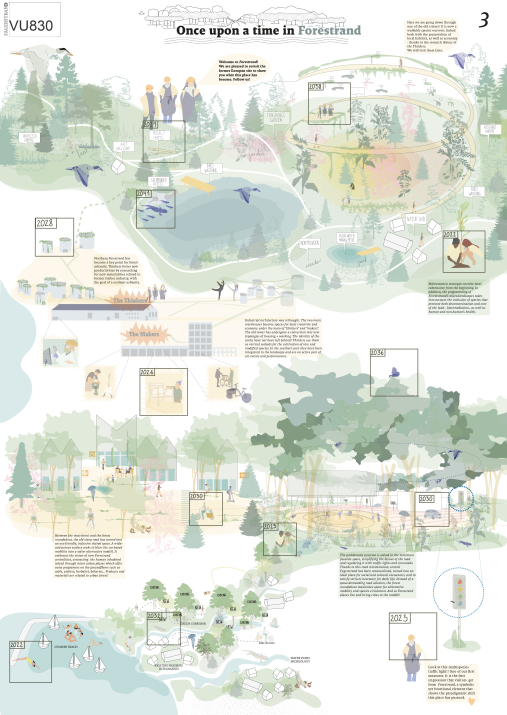Project:
Once upon a time in Forestrand

About
-
Form doesn’t follow function anymore. Forestrand is the reality that already exists, but it requires a new look at the territory. Forestrand is currently sleeping. By moving through this place, we identify a series of fictions that are linked to the forest that surrounds Fagerstrand and that allow us to discover new territorial drifts. A change takes place from an egocentric model to an ecocentric model in which the forest becomes the center and from which a hybrid model that connects human and non-human realities will be articulated. This coexistence of realities provides us with programs dispersed throughout the territory, we call them fictions. Forestrand goes through them and gives shape to models of construction of the territory and habitats, the 4th Landscape
-
Once upon a time in Forestrand takes a new approach to architecture: Form follows fiction. Taking the brief’s challenge of making a place where nature is in the centre head on, the team explores the issues related to representing and planning for non-human species. They identify the need for fiction as a programmatic tool in shaping a hybrid landscape responding to both human and non-human needs.
The team proposes islands of development in limited parts of the landscape, responding to a good understanding of the topography as well as Fagerstrand’s rural identity. The project’s approach deals with biodiversity in a comprehensive way, reducing barrier effects and successfully establishing a vibrant centre for Fagerstrand by the strategic placement of programs and altering the road to make an intersection. The development strategy ensures green corridors and clusters of settlements conducive of creating good human communities. The stripe concept reinterprets the idea of the high street to create a path of urbanity connecting the school, centre, hill and the seaside where most of the existing buildings are kept and given cultural programs.
Where Once upon a time in Forestrand really stands out is in its enthusiastic approach to Fagerstrand as a place in nature, and successfully communicating the massive potential of the concept in producing a unique hybrid community for everyday life.
-
Once upon a time in Forestrand takes a new approach to architecture: Form follows fiction. Taking the brief’s challenge of making a place where nature is in the centre head on, the team explores the issues related to representing and planning for non-human species. They identify the need for fiction as a programmatic tool in shaping a hybrid landscape responding to both human and non-human needs.
The team proposes islands of development in limited parts of the landscape, responding to a good understanding of the topography as well as Fagerstrand’s rural identity. The project’s approach deals with biodiversity in a comprehensive way, reducing barrier effects and successfully establishing a vibrant centre for Fagerstrand by the strategic placement of programs and altering the road to make an intersection. The development strategy ensures green corridors and clusters of settlements conducive of creating good human communities. The stripe concept reinterprets the idea of the high street to create a path of urbanity connecting the school, centre, hill and the seaside where most of the existing buildings are kept and given cultural programs.
Where Once upon a time in Forestrand really stands out is in its enthusiastic approach to Fagerstrand as a place in nature, and successfully communicating the massive potential of the concept in producing a unique hybrid community for everyday life.
Related projects
-

Living city, living sea
'Living city, living sea' proposes a new Fagerstrand where urban development, value creation and…
-

Fagerstrand Intertwined
Our vision is to cross connect the commercial center, nature and the sea side, so that the city's…
-

Hygge
HYGGE explores a possible scenario to steer future developments towards an efficient and cohesive…


